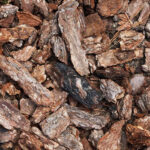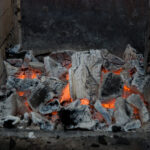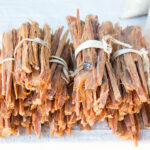When you’re out in the field hunting, camping, homesteading, or farming, you’d probably be using a machete and not a cutlass (unless you’re also a part-time pirate).
In most of the world, the machete is a part of daily life, while a cutlass is not. However, both of these tools look very similar, and there may be an explanation for the confusion.
In this article, I’ll talk about the differences between the two, the history, and their intended uses.
Machete vs Cutlass
Cutlasses are fighting swords and machetes are utilitarian tools. Cutlasses come with associated hand protection like basket hilts, while machetes do not have similar hand protection complements. Cutlasses are naval swords designed as weapons; machetes have been associated with weaponry but they were never designed for this purpose.
What is a Machete and How is it Used?
A machete is a bladed tool used for cutting large plants and vegetation with a chopping motion. Its blade ranges from 30 to 45 cm (12 to 18 inches) or 50 to 65 cm (20 to 26 inches) long and up to 3mm (1/8 in.) thick.
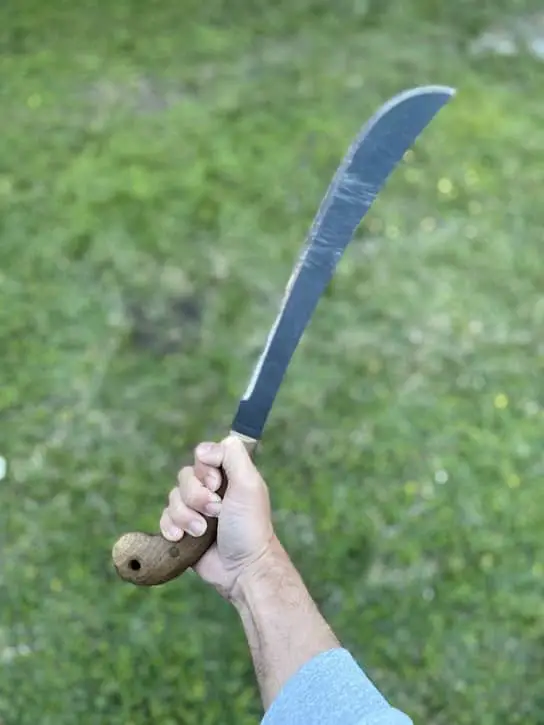
A machete blade is similar to an axe used as an agricultural implement, or a long-bladed knife used in combat, survival or bushcraft.
Over the centuries, machetes have evolved to be the point-heavy slashing tools they are today used for various household and agricultural tasks. Outdoors, especially in the wild, a machete can be used to:
- trim overhanging branches that tangle fishing lines;
- cut through undergrowth and sugarcane fields;
- forage;
- hunt;
- split fruits and nuts;
- clear brush;
- cut, incise, and plane wood to make tools;
- cut and maintain trails;
- chop compost;
- clear woody vegetation;
- make traps and snares;
- construct shelter from bark and poles;
- butcher and process meat;
- manage a campsite (clearing, tindering, making firewood, shelter construction); and
- many more tasks that need cutting, slashing, and chopping.
The term “machete” is derived from the 16th-century Spanish term, “macho“, which means “hammer” or “sledgehammer”. “Machete” is the diminutive version of the original term.
There are several common types of machetes, named differently in the countries they are used: the Nepalese kukri/khukuri, the Filipino bolo (used as a tool) and barong (used for martial arts and combat), the Malaysian parang, the Indonesian golok, the African panga, the Caribbean and African tapanga, and the American Bowie machete.
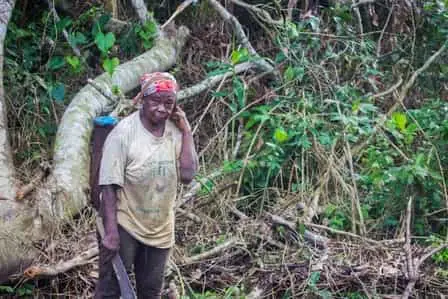
There are also generic-named machetes like the heavy machete, the cane machete, and the traditional machete (or Latin machete, also called the Collins machete after a popular machete brand).
What is a Cutlass and How is it Used?
A cutlass is a nautical short, heavy sword with a curved blade that has a convex edge, once used by sailors and pirates on warships.
Think Pirates of the Caribbean, where they used cutlasses, along with sabers and broadswords. Sailors used this when boarding enemy ships and pirates used this for intimidation as well as for combat.
Designed as a weapon, a cutlass is a slashing sword commonly used as a naval weapon during the Age of Sail and Caribbean exploration.
However, today, cutlasses no longer exist for practical use. They only exist for ceremonial use, like the U.S. Navy model 1917/1941 ceremonial cutlass which is alleged to have been in battle use until 1950.
Over the decades, cutlasses have decreased in weight, became more balanced, and have gotten to resemble heavier versions of land-based fighting sabers.
It’s called a “cutlass” from the 17th-century English use of a 16th-century French word “coutelas” to name a machete-like, mid-length, single-edged blade.
Why are Machetes Often Confused with a Cutlass?
A quick Google search of “machete vs. cutlass” also yields results on questions like: are machetes effective weapons? Are machetes good for home defense? Are machetes good for combat? This suggests people’s popular perception of the machete as a weapon. How did this come about?
Well, for one, in the English-speaking Caribbean countries. like Jamaica, Barbados, Guyana, Grenada, also in Trinidad and Tobago, and Nigeria, the term “cutlass” is used to call machetes.
For other reasons, a machete is a common tool in many tropical countries, so it’s also a handy weapon among peasants for uprisings.
During the Seven Years’ War when the British captured Havana in 1762, machetes were used by the locals to defend themselves.
Machete Buying Guide
There are 5 key factors to consider when buying your machete:
- Blade style
- Blade length
- Blade composition,
- Tang
- Handle style and material.
Blade style
This refers to the shape of the blade, which varies according to the purpose intended for use. Popular styles are the traditional/Latin style, the Filipino bolo-style, the Nepalese kukri/khukuri, the cane style, and the parang.
The traditional style has a long blade with little or no curve until the very tip of the blade or it may also gradually broaden toward the tip. This type doesn’t have a specialty and is often considered all-purpose.
The bolo has a long blade optimized for chopping, like chopping coconuts, and is a handy tool for camping.
The kukri has a 16-inch or so highly-curved blade also optimized for chopping, with the tip for piercing and puncturing and the thin area near the handle for whittling.
The cane machete has a straight back with a curved, wide blade that abruptly ends without a tip and a small hook at the reverse of the blade. Along with the heavy blade, which only differs in that it has no hook, both have the ultimate chopping power.
Meanwhile, the parang, with a blade up to 24 inches long and with 3 edges because of the length, looks like a sword with a wide end. The top edge is designed for skinning, the middle edge for chopping, and the bottom edge for whittling. It’s best for jungle use.
Blade lengths
The length of a machete blade can vary from 10 inches to 28 inches, with the common length at 18 inches. Again, it depends on your purpose. Shorter blades are more portable but have less reach. Longer blades can clear large areas in less time but are also harder to transport.
Blade composition
This refers to the type of material the blade is made of. The most common material is carbon steel. Some models are made from stainless steel and other alloys.
Generally, carbon steel is stronger and more durable than stainless steel but carbon steel is also more corrosive and rusts quickly. So, high carbon stainless steel blades have been developed to combine the strengths of both stainless steel and carbon steel.
Tang
The tang connects the blade and the handle of the machete and extends into the grip. If you intend to use your machete regularly, applying great force for slicing or chopping, make sure it has a full tang — it’s riveted in place and fully extends up to the end of the handle.
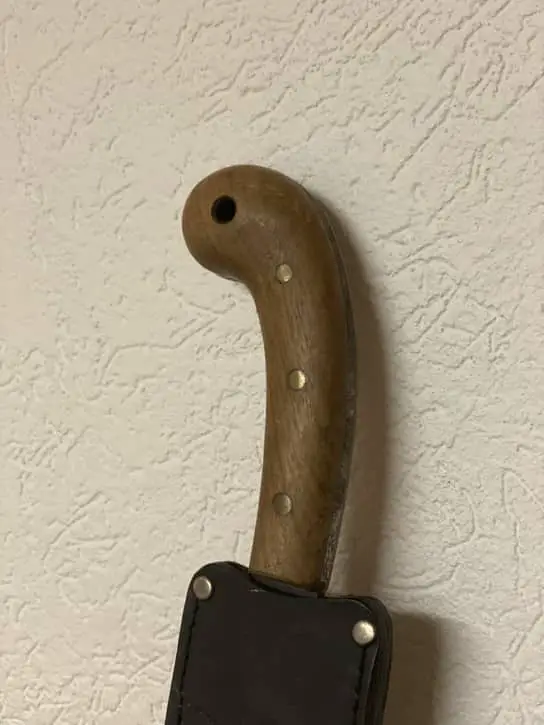
This can usually be found with 1-3 rivet pins, holding the full tang firmly in place.
Handle Style and Material
There are several handle styles and materials a machete can be made from. The most common are wood, molded plastic, steel, rubber or textured, leather, and Micarta.
But handles can also be made from recycled car parts, bamboo, and even rawhide.
You May Also Like: Why Do Some Knives Have Holes In The Blade Or Handle?

